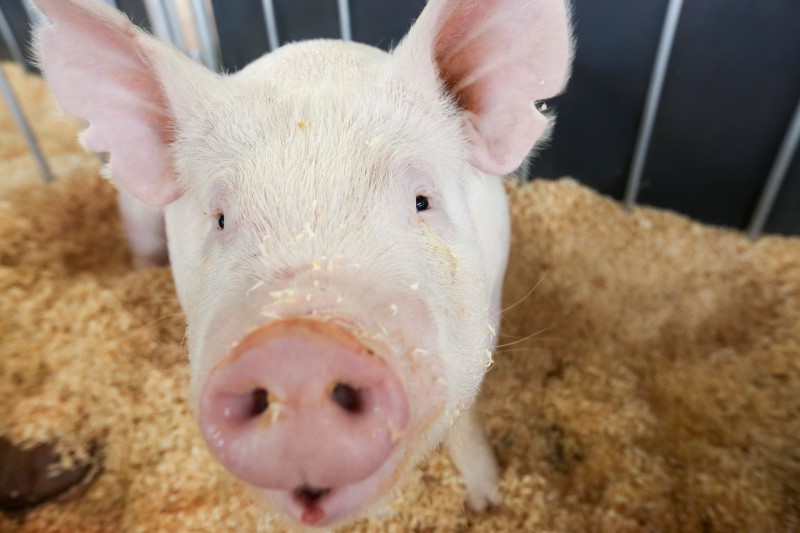By Theopolis Waters
CHICAGO, Aug 22 (Reuters) - U.S. hog farms devastated by a swine virus three years ago have rebuilt their herds to record levels, an accomplishment that has brought equally formidable problems.
The value of young "feeder" pigs weighing 10 to 12 pounds, the building block of the U.S. pork sector, has plunged by nearly three-quarters this year, according to U.S. Department of Agriculture data.
This is the latest pain point for a sector that has struggled to bounce back from the Porcine Epidemic Diarrhea virus outbreak, which has killed an estimated 8 million pigs since May 2013.
Cheaper feed grain prices, including a 60 percent plunge for corn since 2012, also convinced farmers to increase their herds, according to federal data.
But others were also rebuilding, said Iowa State University economist Lee Schulz. Canadian feeder pig imports to the United States are up more than 8 percent so far this year, he noted.
Livestock analysts said packers might be turning their eyes north to take advantage of the strong U.S. dollar.
Competition from other U.S. protein producers also has eroded the pork farmers' gains. Bigger cattle herds and poultry flocks in recent years began to vie for retailer and consumer dollars, industry analysts said.
That heated competition has been eroding slaughter hog prices since early July, which in turn trimmed farmers' profits. As a result, producers looking to add to their herds started to shy away from buying young pigs.
Another warning sign: Farmers may have rushed animals to market ahead of schedule, which may have contributed to weaker hog and piglet prices, consultant Len Steiner recently wrote in his Daily Livestock Report newsletter to clients.
Recent USDA data showed the average price of feeder pigs hit a low of $17.67 per head for the week ended on July 30, down almost 73 percent from its Jan. 30 high.
The Chicago Mercantile Exchange two-day lean hog index .IHX , a barometer of slaughter prices, fell to 67.32 cents per pound on Friday from this year's peak of 85.03 cents on June 30.
The declines could not occur at a worse time for hog farmers. The U.S. summer grilling season, which usually puts more money in packers' and farmers' pockets, is nearing its close. Demand from retailers for the Sept. 3-5 U.S. Labor Day holiday weekend may offer only short-term relief for hog prices, analysts said.
After that, Schulz said, hopes for pricing will rest heavily on whether domestic demand for pork grows and whether the United States can boost exports.
The USDA estimated pork exports at 5.22 billion pounds (2.37 million metric tonnes) for 2016 and 5.30 billion pounds for 2017. Last year the United States exported 4.94 billion pounds. (Editing by P.J. Huffstutter and Lisa Von Ahn)
